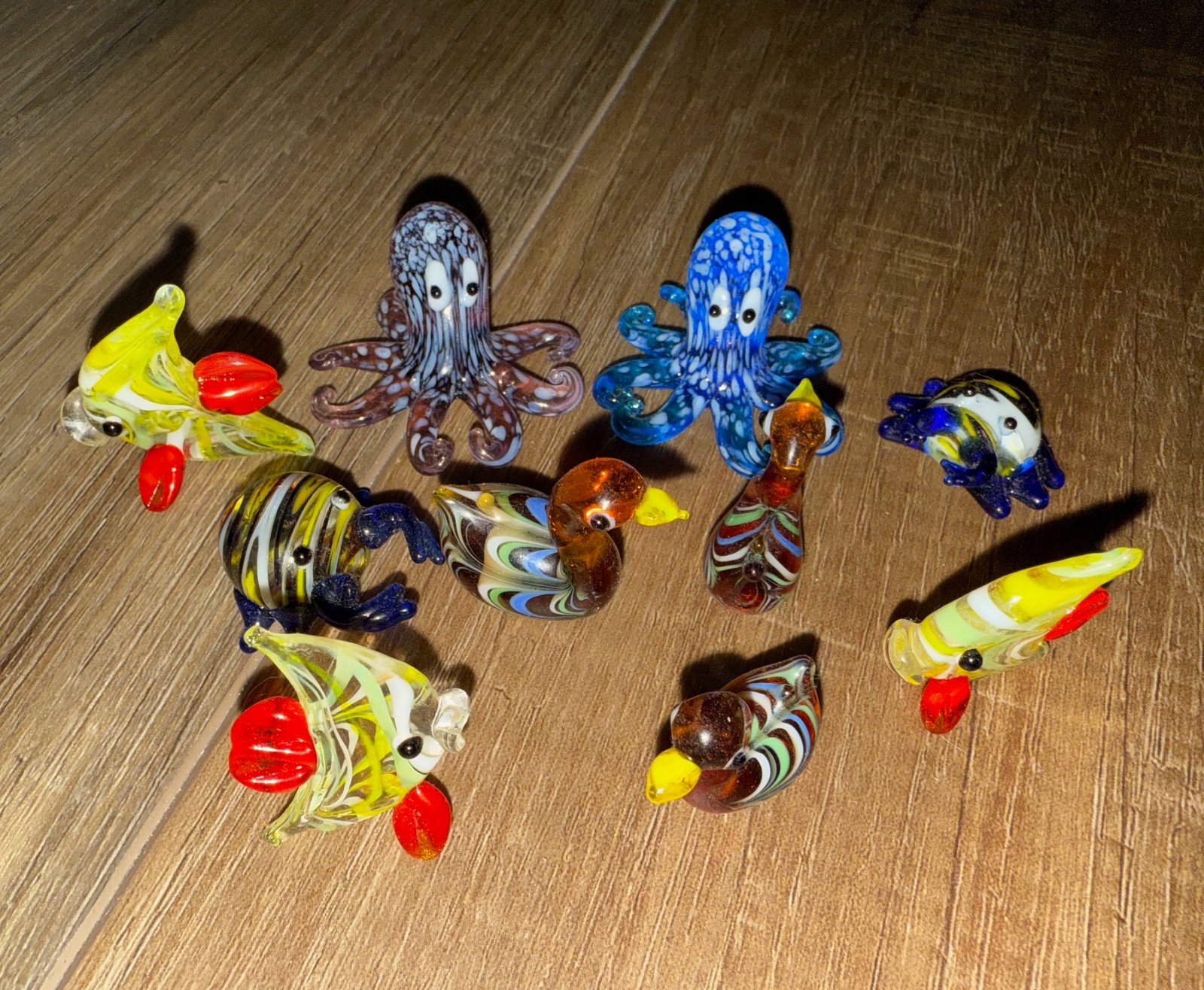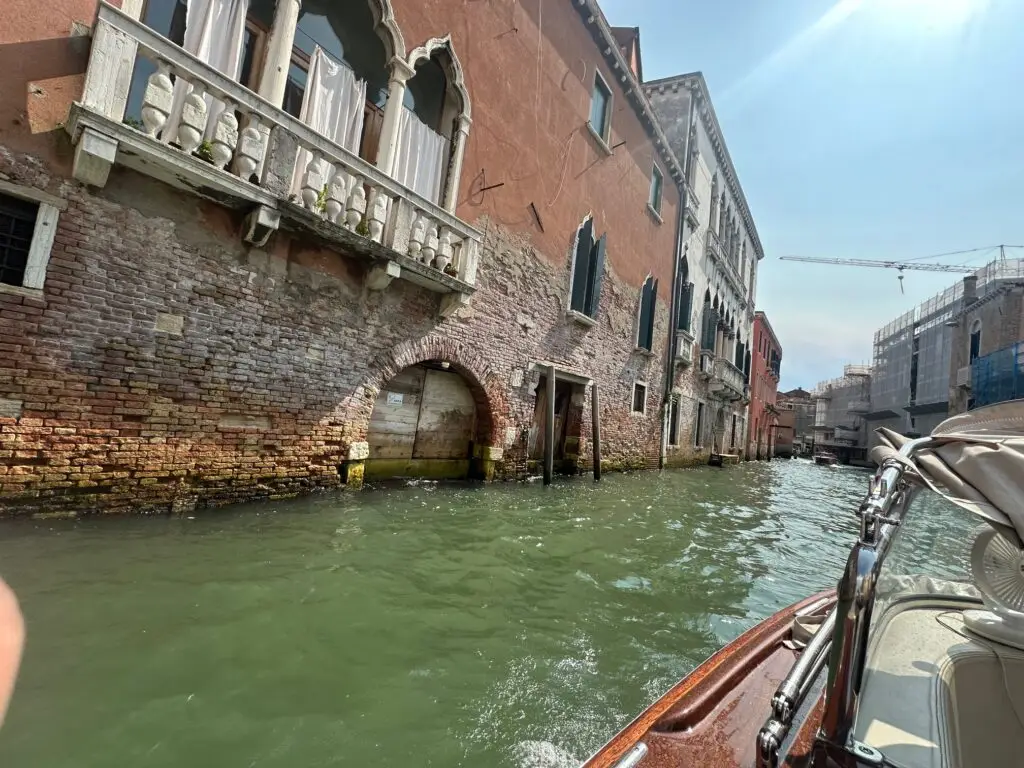
Venice Family Travel Guide
After our adventures in Rome, it was time for a more relaxed trip. European airlines are notorious for delays, and ITA Airways did not disappoint. We were scheduled to arrive at 6:25 P.M., but instead, we landed at 8:08 P.M.—just 17 minutes short of triggering EU 261 compensation. Had the delay been slightly longer, we would have been eligible for reimbursement.
I’ll go into more detail later, but throughout this trip, we ended up receiving over $2,000 in EU 261 compensation.
European Business Class Experience
Unlike in the U.S., European airlines don’t typically offer what Americans think of as domestic First Class or Business Class. Instead, European business class seating usually consists of standard economy seats arranged three across, with the middle seat blocked for extra space and privacy. For this flight, I booked business class on ITA through Air France for 20,000 miles per ticket—economy was only slightly cheaper at 12,000 miles. While having an empty seat next to me was nice, the real benefit turned out to be lounge access. Our flight was delayed, so we ended up spending an hour in the ITA lounge. I also had access to two other lounges via Priority Pass, but both had lines out the door.

A Lounge Encounter to Remember
While in the lounge, we witnessed a scene that could only happen in Italy. A woman approached the bartender and requested French Champagne, declaring it was “the good stuff.” The bartender, visibly offended, sternly corrected her and refused to serve it. After she left, he walked over to us, still fuming. Sensing the moment, I quipped, “French Champagne! Who orders that?” He burst out laughing, and from that moment on, we were in his good graces. As a result, he treated us exceptionally well, even crafting one of the best espresso martinis I’ve ever had.
This was just the pickup I needed after the painting debacle. It could have used more of caffeine. The hors d’Oeuvres in the lounge were good too. 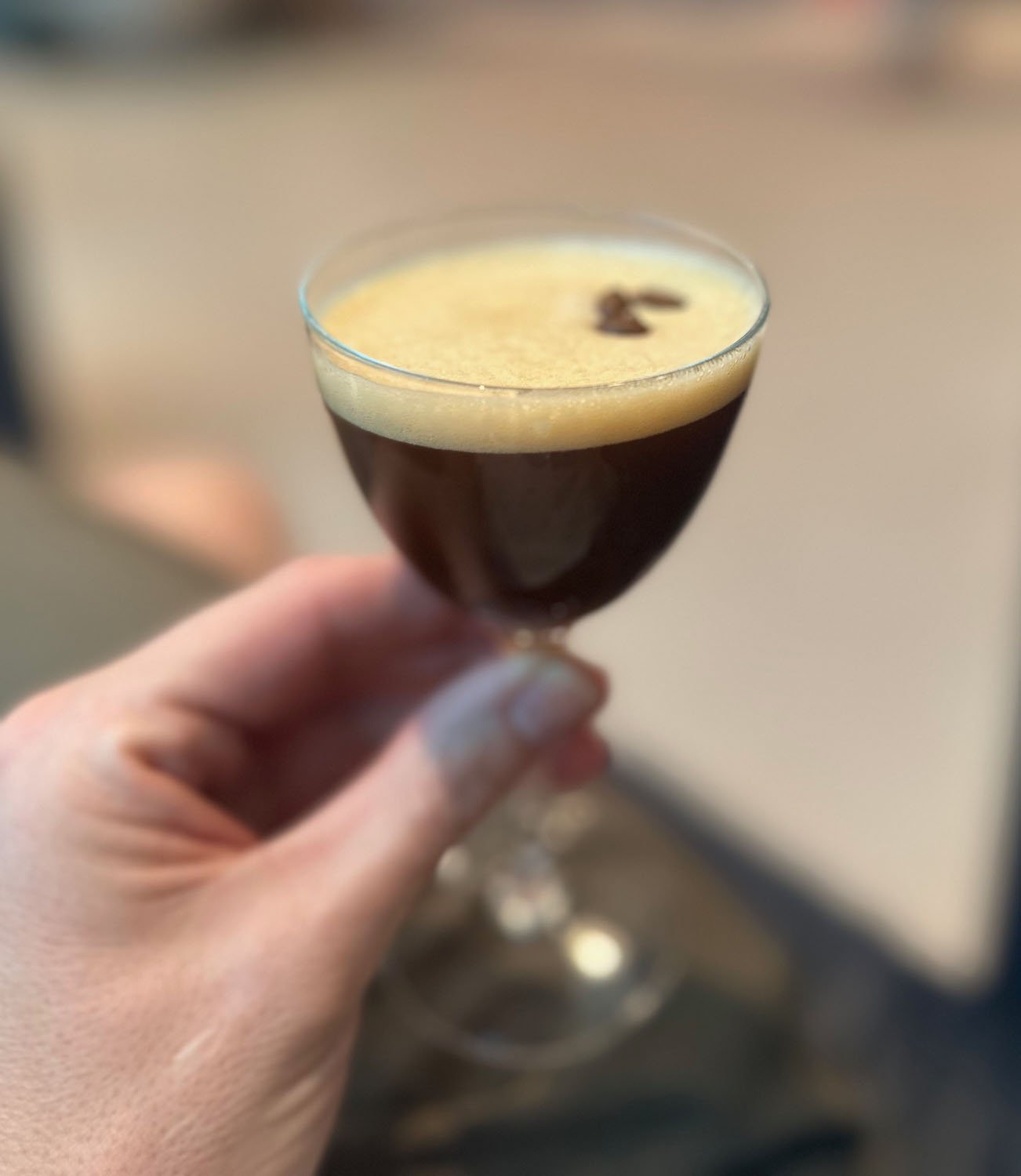
A Stay at the Hyatt Centric Murano
I booked us at the Hyatt Centric for 12,000 points per night—an incredible value. One of the perks of this hotel is its complementary, dedicated water taxi service to and from the airport. Unfortunately, due to our flight delay, we would arrive after the water taxi had stopped operating.
From the terminal, it’s about a 15-minute walk to the pier. We took the Alilaguna Blue Line ferry for €8, which brought us directly in front of the Hyatt in about 40 minutes. Check-in was smooth, and when I asked about a suite upgrade, they happily obliged, offering us a fantastic two-story room. It wasn’t quite ready yet, so they invited us to wait at the bar or restaurant.
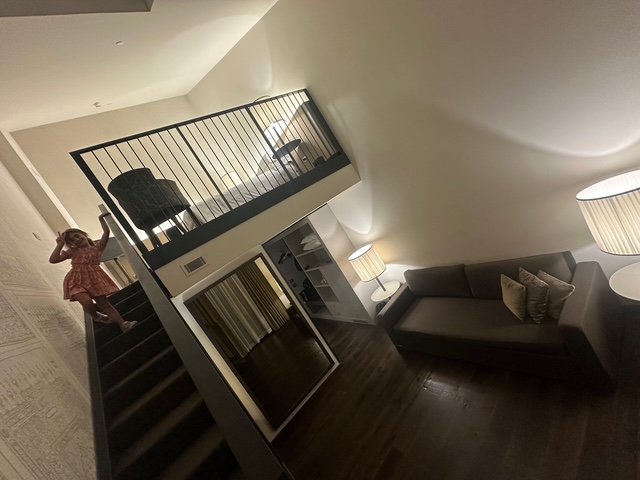
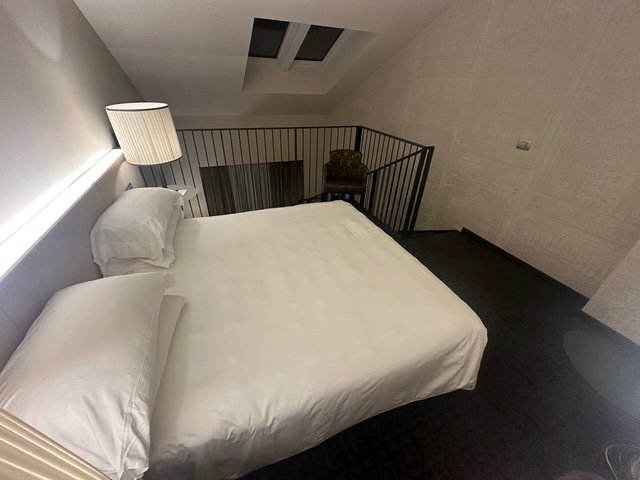
A Late-Night Food Hunt
After the long travel day, we were starving. The only food we’d had was a few snacks at the ITA lounge. We headed to the hotel restaurant, only to be met by a hostess who regretfully informed us they had closed—just five minutes before we arrived. Hoping for another option, I checked with the bar, but they had also stopped serving food at 9:30. When I asked where we could find something to eat, the bartender explained that in Murano, everything shuts down around 9 PM. The closest open restaurants were across the water in Venice. Seeing our predicament, he took pity on us. “I can’t get you anything hot,” he said, “but let me see what I can find in the kitchen.” A few minutes later, he returned with two large bowls filled with fresh fruit, mozzarella, and prosciutto. It wasn’t the meal we had envisioned, but it was enough to hold us over. My daughter was exhausted but she’s always up for a cantaloupe mustache.
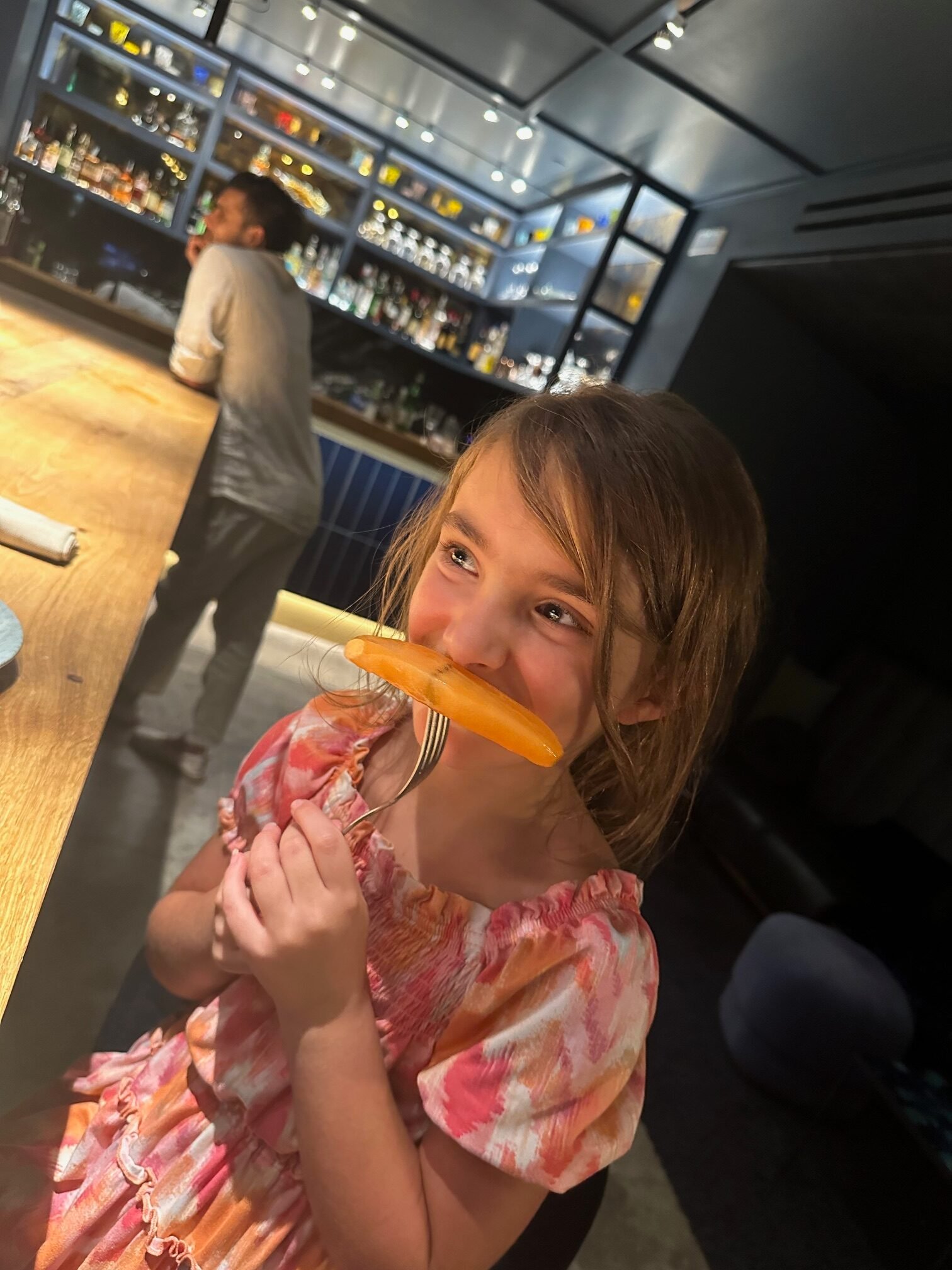
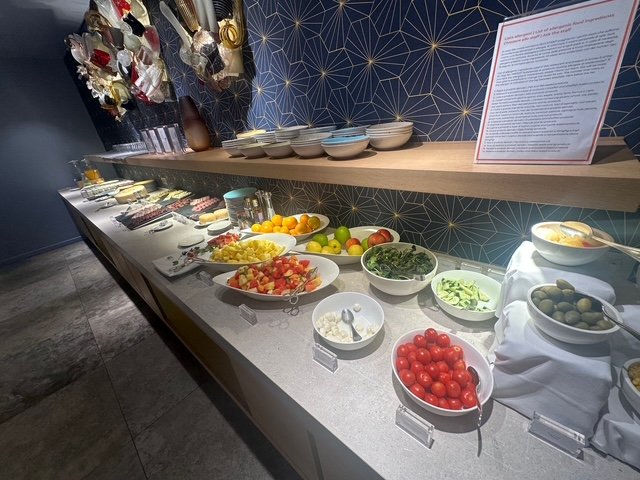 | We can’t start the day without breakfast, the Globalist free breakfast did not disappoint. They had vegetables, fruit, cheese, deli meats, yogurt, oatmeal station, pastries, and fresh pressed juice. Everything was high quality. 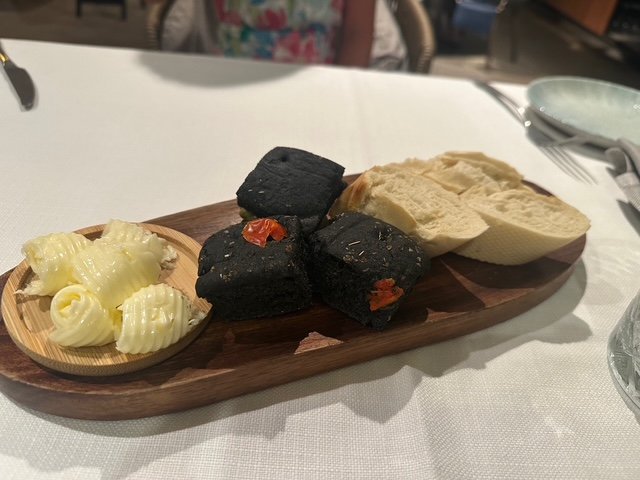 Make sure to try the Icelandic Lava Ash Bread with dinner at Hyatt, its black due to the ash. So good! |
Day 1 – Exploring Murano’s Glassmaking Tradition
| Today, we set out in search of home décor. Murano, home to over 100 glass factories, is the perfect place to find unique, handcrafted art pieces. The craftsmanship here is truly incredible. A great example is the display on the third floor of our hotel—just one of many showcases of the island’s exceptional glass artistry . 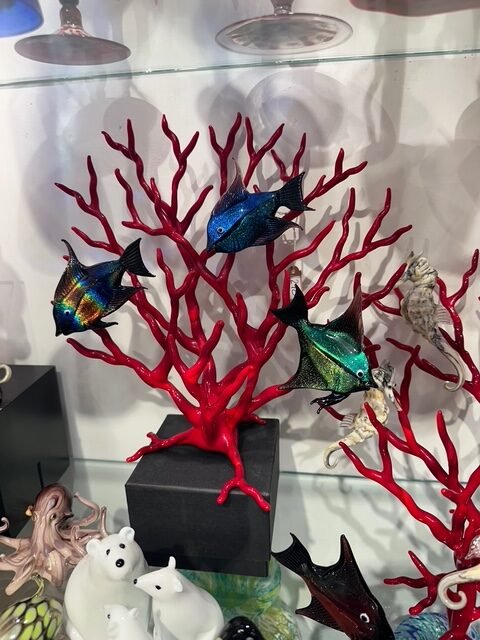 | 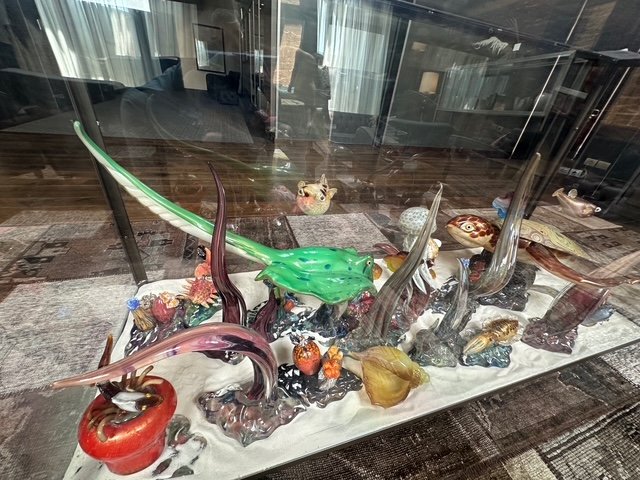 |
Murano is a small island in the Venetian Lagoon, known for its centuries-old glassmaking tradition. The craft began in the 8th century, with glassmakers moved to Murano by the 13th century to prevent fires in Venice. By the 14th and 15th centuries, Murano glass was highly sought after for its intricate designs and techniques, including “cristallo” (clear glass). The island’s glass industry flourished under the Venetian Republic but declined after its fall in 1797.
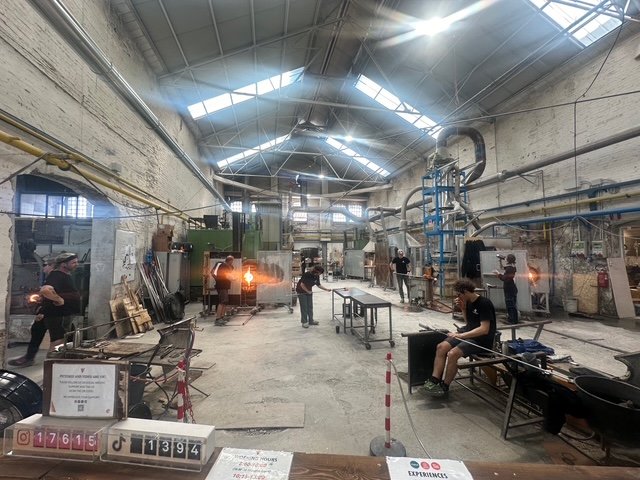 Wave Murano Glass Srl – Factory | A Glimpse into the CraftBefore hunting for the perfect piece, I wanted to see the glassmaking process firsthand. At Wave Glass, visitors can watch artisans at work for free, take a guided tour for €29 per person, or—most intriguingly—participate in a private class to create their own glass souvenir for €232. Had I known about that last option before arriving, I would have booked it in a heartbeat. Unfortunately, they had no availability during our stay. |
I spoke with a glass blower, Marco, for about 30 minutes. During our conversation I learned:
- Glass can be colored by adding metal oxides, such as copper or cobalt, during the melting process.
- Until the 1900’s arsenic was commonly used in pigments. Arsenic, tin oxide, and chromium create emerald green. Arsenic was not banned by Italy until 2015.
- Glass dates to the 16th Century B.C in Mesopotamia. Rome adopted glass in the 1st Century A.D.
- Glass beads were bartered by Vancian traders to obtain spices, fabric, ivory, and other luxury goods.
Navigating Murano’s Glass Shops
In Murano, glass shops line nearly every street, offering a dazzling array of handcrafted pieces. However, not all glass sold here is authentic. Some unscrupulous dealers try to pass off counterfeit or mass-produced glass as genuine Murano craftsmanship. To ensure you’re buying the real thing, keep an eye out for these key indicators:
- Price: Authentic Murano glass is expensive. If an item is priced under €20, it’s likely not genuine.
- Perfection: Handmade glass isn’t flawless—slight variations and imperfections are signs of authenticity.
- Uniformity: If a shop has multiple, identical items, they are probably machine-made, not handcrafted.
- Simplicity: Murano glass is known for its intricate designs and vibrant colors. Plain or overly simple pieces may not be authentic.
- Glassware Bottoms: Authentic Murano drinkware typically has a small bump on the bottom where the glass rod was broken off. Machine-made glasses lack this detail.
- Reverse Image Search: If you’re unsure, try a reverse image search to see if similar items are available from overseas wholesalers.
Also, be sure to look for an “Authentic Made in Italy” sticker, like the one shown in the middle of the photo below. This certification helps verify the glass’s origin and craftsmanship.
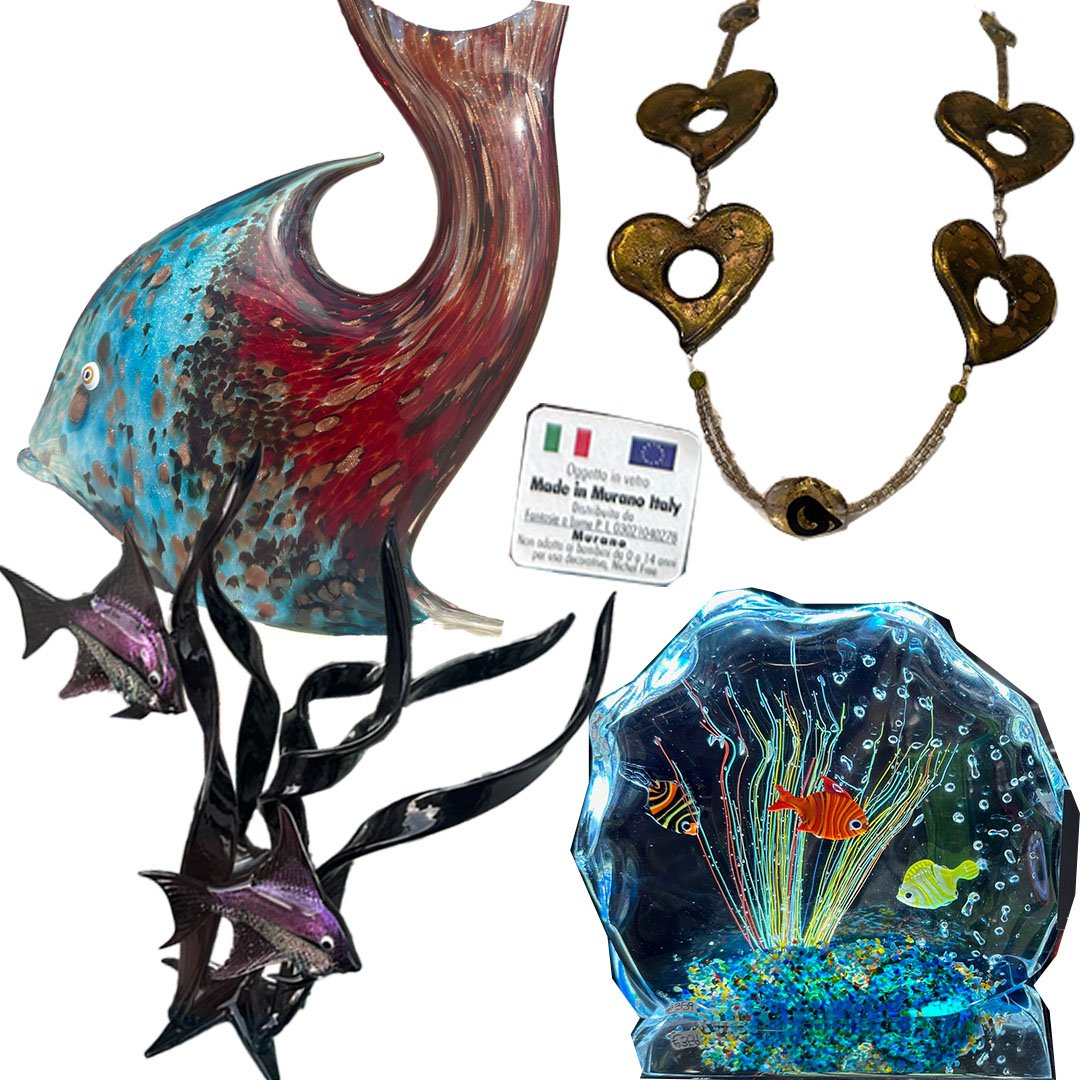 Examples of authentic Murano glass. Fish top left: 165 EUR | Neckless: 120 EUR Fish bottom left: 75 EUR | Aquarium: 400 EUR |
Murano is world-famous for its exquisite glasswork, but not all “Murano glass” is authentic. Many shops, especially in Venice and tourist-heavy areas, sell cheap, mass-produced imitations—often from China. All of the above pieces are from purchased in Murano but came from China. |
A Morning of Glass Shopping & an Unexpected Lunch Spot
We spent the morning wandering through Murano, stopping in every glass shop we came across. I was on the hunt for two specific items—an aquarium and a necklace. With so many stores to explore, we had only made it about half a mile from the hotel by lunchtime.
For lunch, we went to Osteria Al Duomo. In Italy, dining in at a restaurant often comes with an additional service charge, so we opted to take our food to go. We ordered a Margherita pizza for €9 and headed to a nearby picnic area (Picnic e Area Giochi) to eat. The entrance is tucked between two buildings and easy to miss unless you know it’s there. We only found it thanks to a shop owner who had recommended it after we made a purchase.
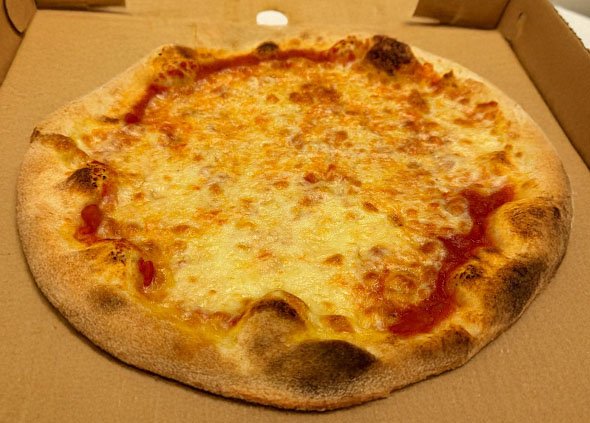 | A Parmesan Faux PasWhile ordering, I made the mistake of asking for Parmesan cheese for my pizza. The staff flat-out refused, explaining—politely but firmly—that it would overpower the flavors of the pizza. In Italy, if Parmesan is meant to be on a dish, it’s cooked in, not added afterward. Despite my minor cultural misstep, the pizza itself was fantastic—perfectly cooked, with homemade dough, high-quality cheese, and a great price. If you’re in Murano, Osteria Al Duomo is well worth a visit. |
In Italy, a “coperto” or dine-in charge is a small fee typically added to the bill for sitting at a table, which covers things like bread, table settings, and general service. The coperto can range from €1 to €3 per person, depending on the restaurant.
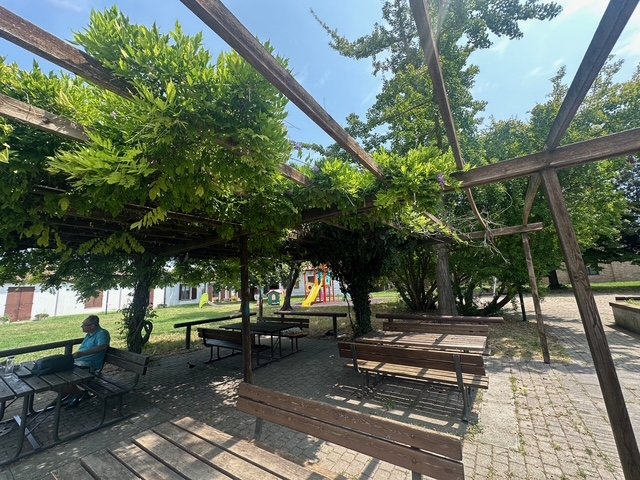 Picnic e Area Giochi | Finding the Perfect Murano AquariumWe spent several more hours browsing glass shops, and I finally found my aquarium. Most modern Murano glass aquariums are made in two pieces and then fused together. If you look above at the section “Examples of Authentic Murano Glass,” you’ll notice how straight the seaweed appears and how uniformly the bubbles are placed between the fused sections. However, authentic Murano masters can mimic nature—real seaweed twists and floats organically in the water. |
A True One-Piece MasterpieceWhen I found this aquarium, I immediately knew it was the one. It’s a 17-pound, single solid piece of glass—a level of craftsmanship that requires incredible precision. The entire glass block must be heated evenly while the artist carefully inserts each detail, one by one. It sounds simple, but the intense heat can easily warp, distort, or bend the intricate details if not done perfectly. You can see how the seaweed in my piece looks like it’s naturally swaying, and the bubbles are scattered throughout—not just in the center like in modern fused versions. This particular piece is older—the seller estimated it was from the 1970s. I believe him, especially since he only mentioned this after I had already purchased it. | 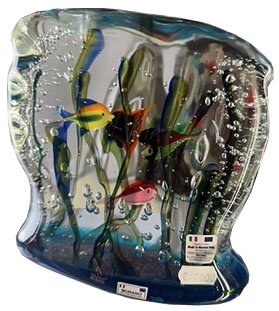 the lowest-priced modern aquariums of this size that I saw ranged from €300 to €600. I paid €400 for mine, and considering its craftsmanship and authenticity, I feel like I got a fantastic deal. |
Dining at the Hyatt Centric Murano
We had dinner at the Hyatt’s restaurant—while we paid a premium for the convenience of dining at the hotel, the food was surprisingly good, exceeding my usual expectations for hotel dining. A bonus? Earning Hyatt points while eating on property.
I charged €200 to the room, and as a Globalist, I earned 6.5 points per dollar from Hyatt, plus an additional 4 points per dollar by paying with my World of Hyatt credit card. In total, that came to 1,575 points, worth at least $40 (valued at 2 cents per point). Not a bad return for a meal!
Exploring the Glass Museum
On our second day, we visited the Murano Glass Museum. Tickets were €10 for adults and €7.50 for children. The museum itself was fascinating, showcasing the evolution of Murano glassmaking through the centuries. However, after about 45 minutes, my daughter started getting bored. She started loudly announcing, “Yep, that’s definitely more glass,” after every display…
While you can see plenty of glass art just by walking around Murano, this museum is the only place I found that truly shows the history and evolution of glassmaking. Understanding and analyzing these historical artifacts offers a unique glimpse into the culture behind the craft—and that’s what makes it so compelling.
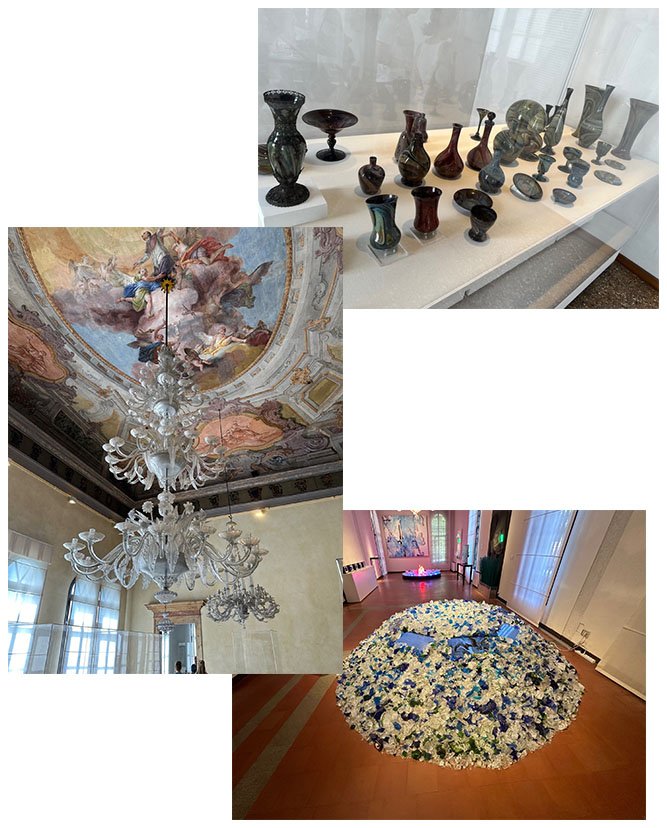 Glass Museum Murano | 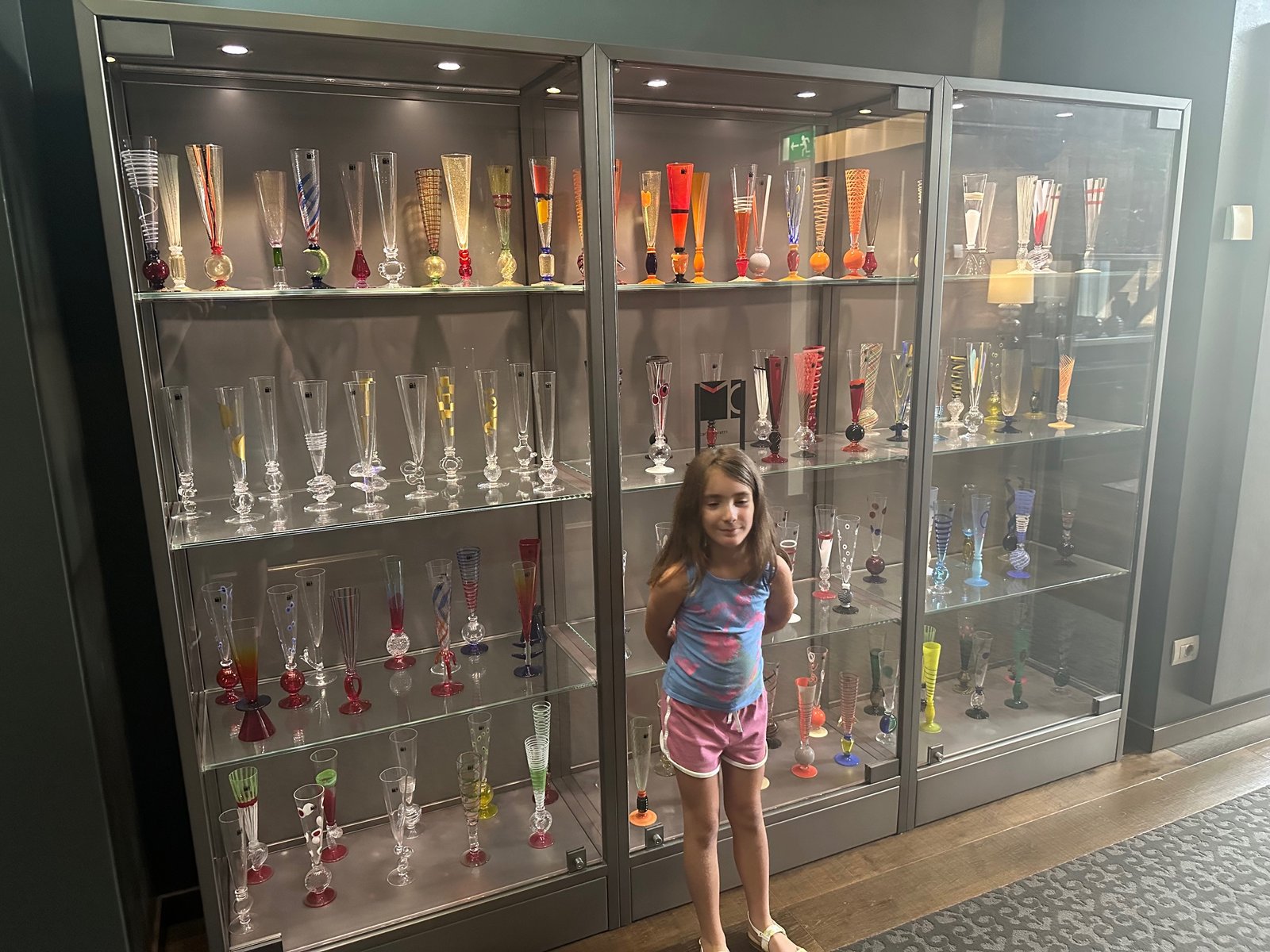 Modern Glass display – Hyatt Centric. While I appreciate the craftsmanship and history behind antique Murano glass, I personally gravitate toward the more modern pieces with their bold, vibrant colors and contemporary designs. The rich hues and intricate patterns of newer creations feel more dynamic and eye-catching to me |
A Water Taxi to Venice
The next day, the hotel arranged a water taxi to Venice for us. At €150, it wasn’t cheap, but that was the standard rate—no upcharge from the hotel.
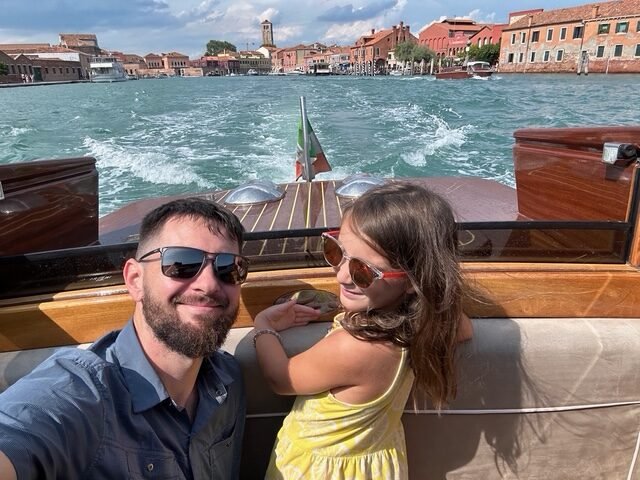 | Staying at Hotel Aquarius VeniceI booked Hotel Aquarius Venice through Choice Hotels, using Citi ThankYou points transferred at a 1:2 ratio. This made the 30,000-point stay cost only 15,000 Citi points, an incredible value. The best part? No additional taxes or fees, including the government-imposed tourist tax of €5-10 per night, which the hotel covered. As a Choice Hotels elite member (thanks to a status match from Hyatt), we also got free breakfast and a room upgrade. The room itself was fantastic—spacious, well-designed, and comfortable. |
A Rock & Roll SurpriseUpon check-in, we discovered that a local American rock & roll festival was happening nearby. My first thought? Cool. My second thought? This is going to be loud. Thankfully, the hotel’s solid brick construction kept things quiet. Even directly in front of the hotel, we couldn’t hear the music unless we opened the window. We spent the afternoon exploring the canals before heading to the festival, which started at 5 P.M. We grabbed food first—a smart decision, as the lines were wrapping around the block within a few hours. We ate here both nights for just €30 total.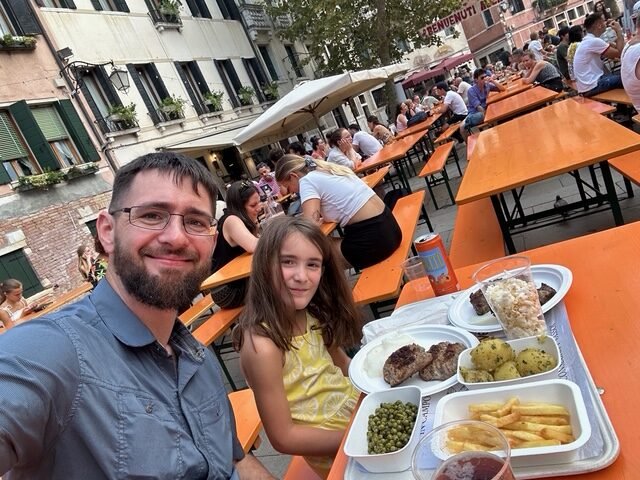 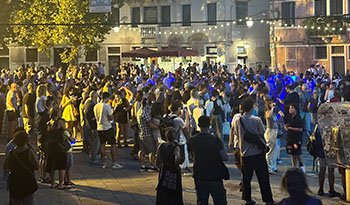 | 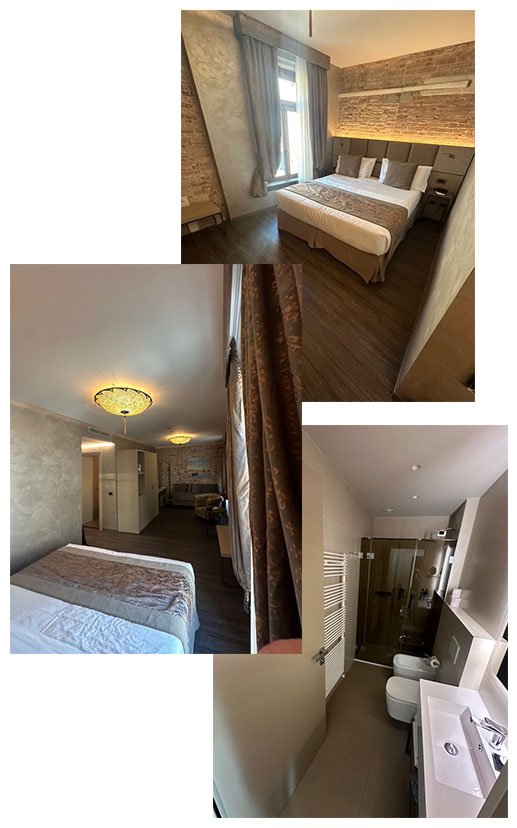 |
Breakfast at Hotel Aquarius
Breakfast at the Hotel Aquarius was decent, but not on the same level as the Hyatt Centric. The juice was from concentrate, and the yogurt was mass-produced—fine, but nothing special.
I had pre-booked tickets to St. Mark’s Basilica, as most major attractions in Italy require reservations, often weeks or even months ahead. Many places we visited had no same-day availability, so planning is crucial.
Walking to St. Mark’s Basilica & Spotting Fake GlassFrom the hotel, it was an easy 20-minute walk to St. Mark’s Basilica, passing over the Ponte di Rialto—Venice’s most famous bridge spanning the Grand Canal. Along the way, we passed countless souvenir shops, many selling “Murano” glass. Here’s where you need to be extra cautious. Many shops were selling identical glass items, and a quick reverse Google image search revealed their true origin—wholesale suppliers in China. | 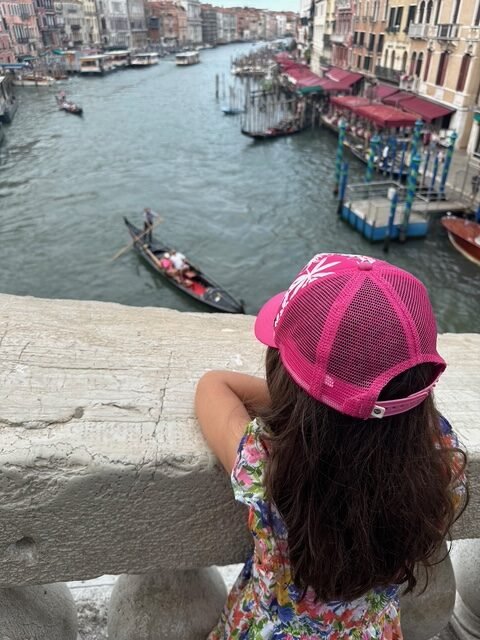 |
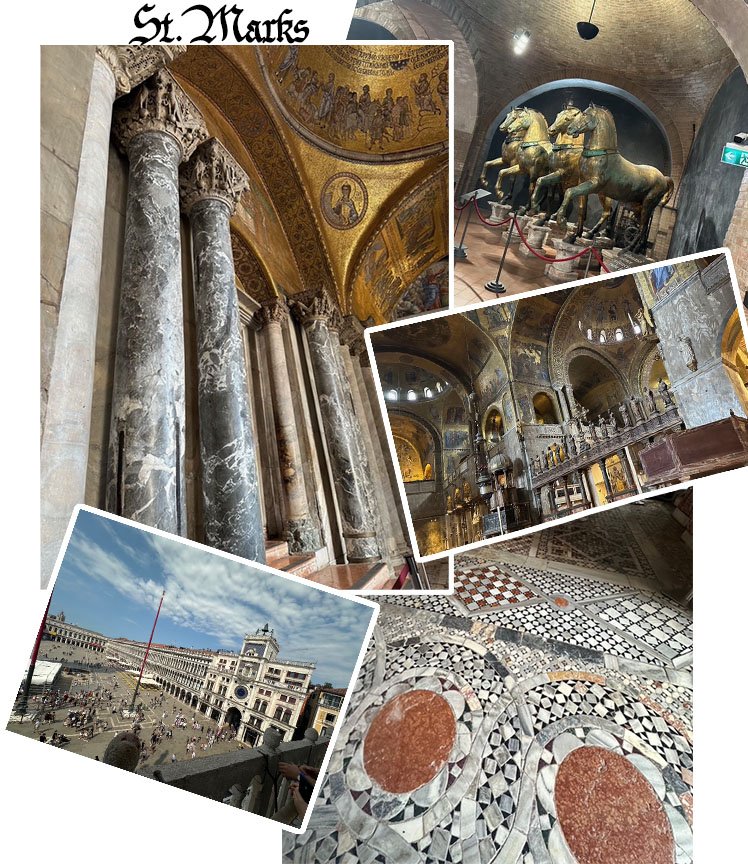 | The Church of GoldA stunning fusion of Byzantine, Gothic, and Renaissance architecture, St. Mark’s Basilica stands as a testament to Venice’s rich history and grandeur. Built in the 11th century to house the relics of St. Mark, the basilica is known for its breathtaking golden mosaics, intricate domes, and ornate facades, which shimmer in the Venetian sunlight. The marble columns supporting this architectural masterpiece were sourced from across the Mediterranean, many acquired as spoils of Venetian conquests, adding to the church’s historical depth and opulence. One of its most iconic features is the Triumphal Quadriga, a set of bronze horses originally looted from Constantinople during the Fourth Crusade in 1204. These |
magnificent statues once stood above the basilica’s main entrance, symbolizing Venice’s dominance and wealth. To preserve them from the elements, the originals have been moved inside, while reproductions now grace the exterior, maintaining their commanding presence over St. Mark’s Square.
I had originally planned on doing a Gondola ride, but at €90 (€110 after 7 P.M.), I ultimately decided it wasn’t worth the price.
Note: If you want the experience without the steep cost, head to the Grand Canal and look for the Gondola Traghetto. For just €2, you can take a Gondola across the canal—a great way to get a taste of the ride before committing to a full 30-minute tour.
Would I Return to Venice?
While I would visit Venice again, it’s not at the top of my list. My biggest complaint? The smell. Venice lacks a modern sewage system, instead relying on the ocean to remove waste, which can lead to some unpleasant odors.
I’d recommend staying 3 to 5 nights in Venice—that seems like enough time to explore the main sights without feeling rushed. By the third or fourth day, the canals start to blend together, and the charm of wandering through narrow alleys begins to wear off. Venice is a fantastic stop on a larger trip, but I wouldn’t plan a visit solely for Venice unless there was a compelling reason, like a special event or a deep interest in its history.
ITA Airways Strikes Out Again
Our two days in Venice were wrapping up. We had a 06:20 A.M. flight with a connection in Rome before heading to Athens. Since this was outside the public ferry hours, I had the hotel arrange a private water taxi to the airport for €120—expensive, but the fastest option for an early flight.
At 3 A.M. Flighty started blowing up my phone. Half-asleep, I checked my screen: flight delay, 2.5 hours. At first, I wasn’t too bothered—I could sleep in. Our flight was rescheduled for 8:50 A.M., and the hotel kindly changed our water taxi pickup at no extra charge.
I always use Flighty, and you should too. It pulls real-time flight data from multiple sources, tracks aircraft movements, and uses machine learning and AI to predict delays. If you’re supposed to board in an hour but your plane is still on the ground two hours away, Flighty knows—and it tells you. In many cases, it delivers updates faster than the airlines themselves, giving you a crucial head start on adjusting your plans. It also monitors ground stops, weather, and airport issues.
We arrived at the airport at 7:45 A.M., only to face a six-hour delay. We were supposed to be in Athens by 11:15 A.M, flying through Rome. When we finally made it to Rome, at 6:40 P.M., we were hit with another five-hour delay.
At this point, lounge access was a lifesaver. Sitting in the boarding area for five hours sounded miserable, and hauling our luggage around Rome wasn’t an option either.
When we walked in the lounge, my bartender friend was working again. With a grin, I walked up and ordered French Champagne. A flash of rage crossed his face—until we made eye contact. We both laughed.
Getting Paid for Airline Shenanigans
With all the extra time, I decided to investigate who was responsible for this travel disaster. I had booked ITA Airways using Air France Flying Blue points, so I contacted both airlines to request official documentation of the delays.
After some digging, I discovered that ITA had overbooked our flight and pushed a rebooking request to Air France, who accepted it without informing me. That caused the second delay. The first was a late departure from the previous destination. The other delays were due to mechanical failures.
Thanks to EU 261 compensation laws, I was owed €1275 from ITA for the delays. However, I may be eligible for multiple EU 261 claims—I’m still figuring out whether it applies per flight or per segment. Either way, I paid nothing for my flight and got paid €1200 to sit in a lounge all day. Not bad.
Since we were arriving so late, I had the hotel send a private car for €75, I didn’t mind since ITA was paying for it. Given the hour, a taxi would have been €55, during the day its €45.
Wave Murano Glass Srl – Factory +39 329 043 3343
Fondamenta da Mula, 152, 30141 Venezia VE, Italy
Picnic e area giochi Murano
Fondamenta Andrea Navagero, 26, 30141 Venezia VE, Italy
Osteria Al Duomo +39 041 527 4303
Fondamenta Andrea Navagero, 20/21, 30141 Venezia VE, Italy
Glass Museum (Murano) +39 041 739586
Fondamenta Marco Giustinian, 8, 30141 Venezia VE, Italy
